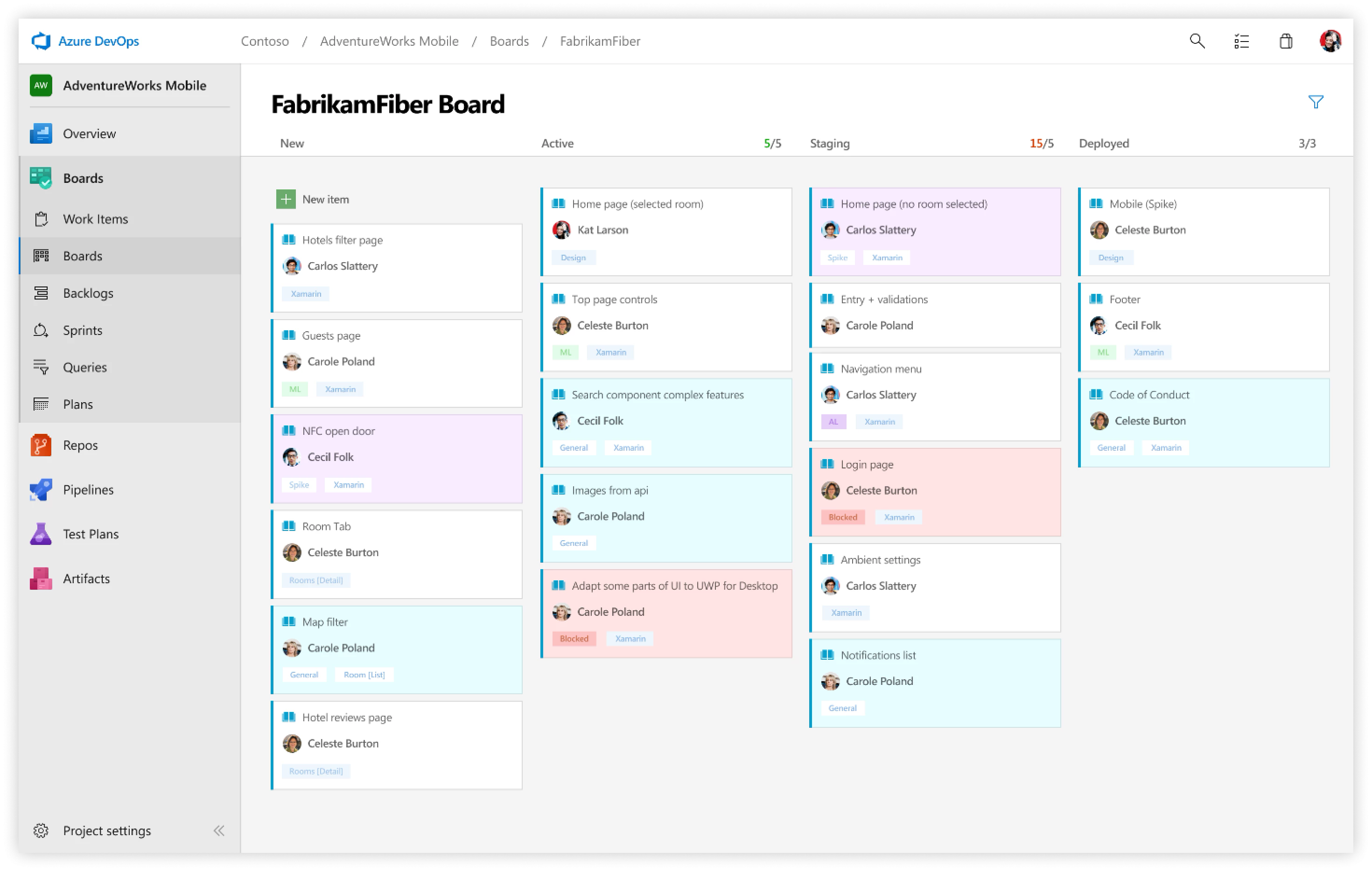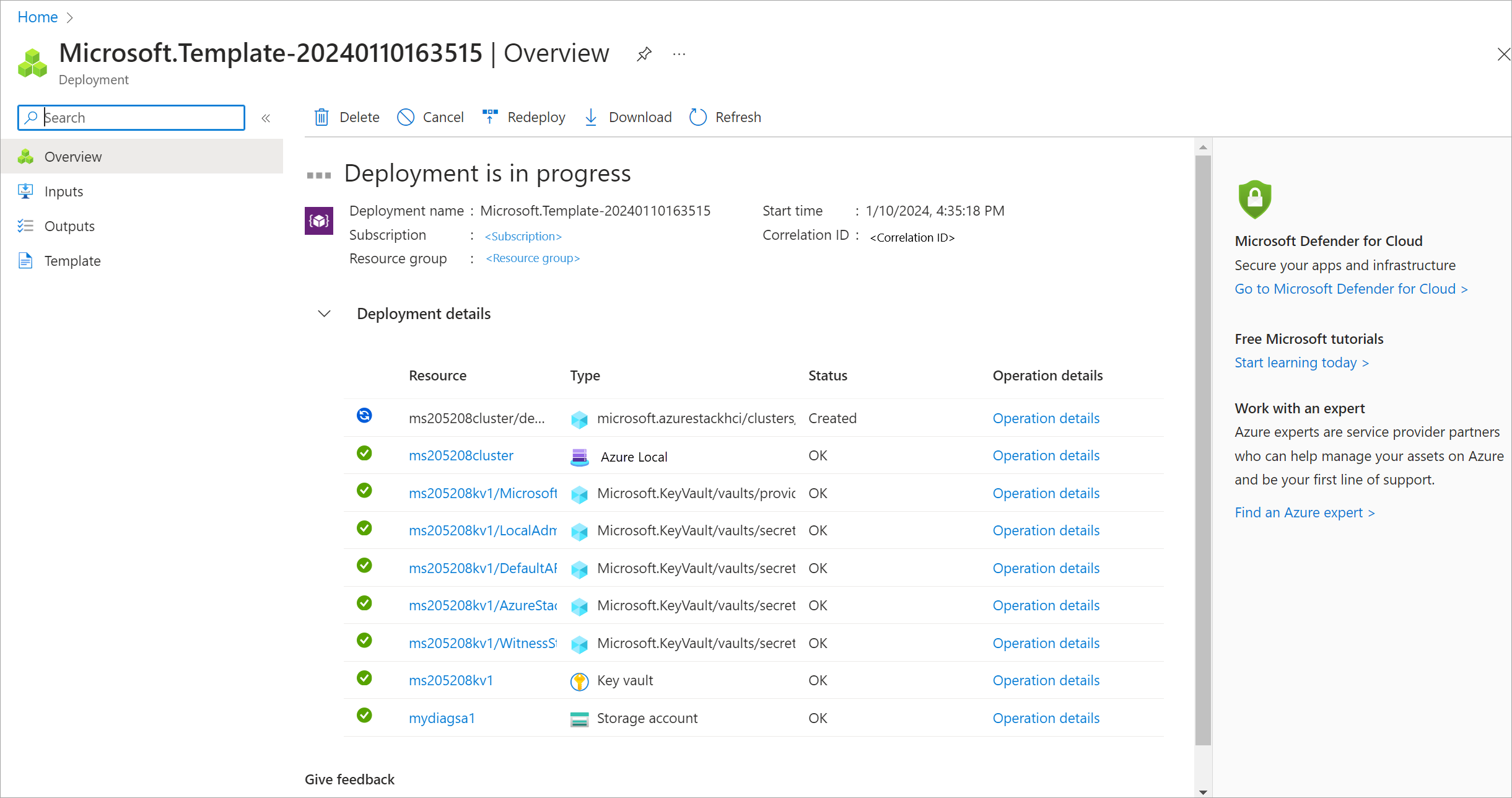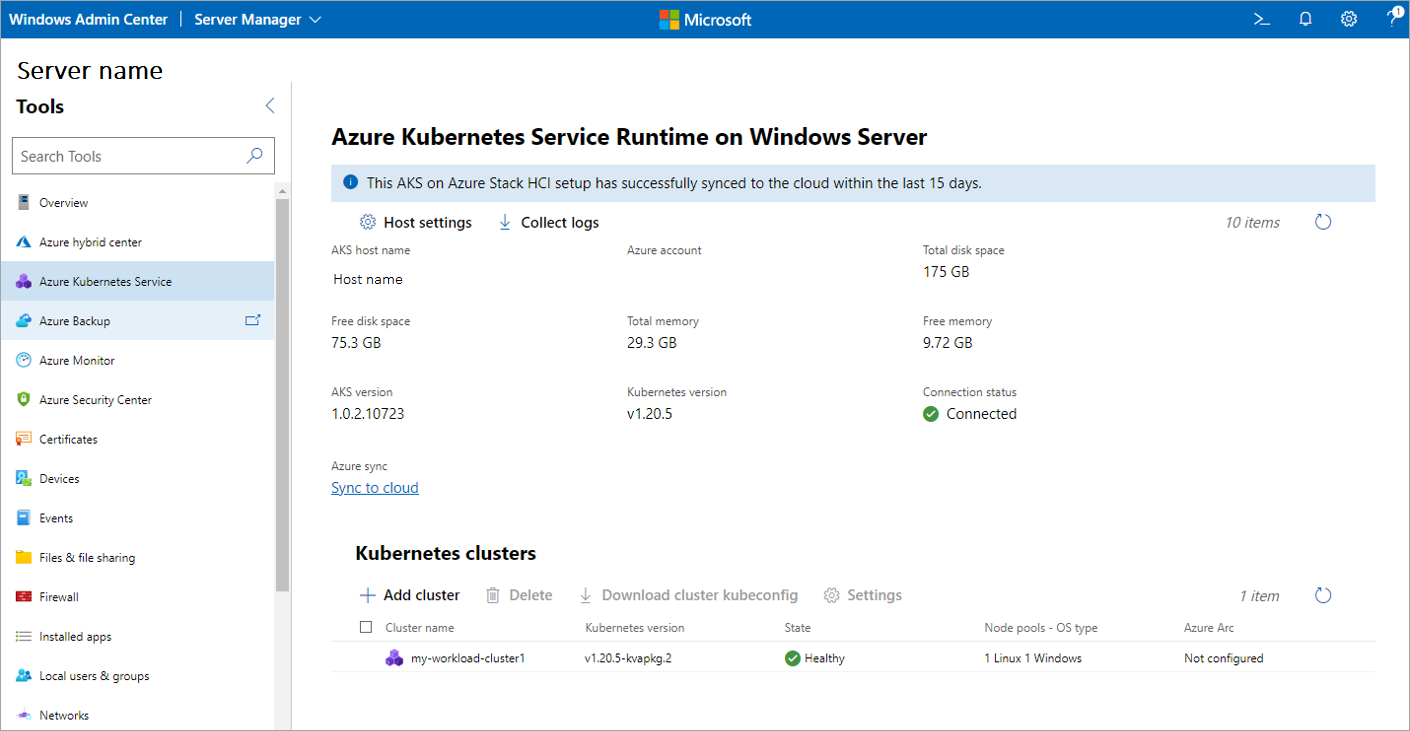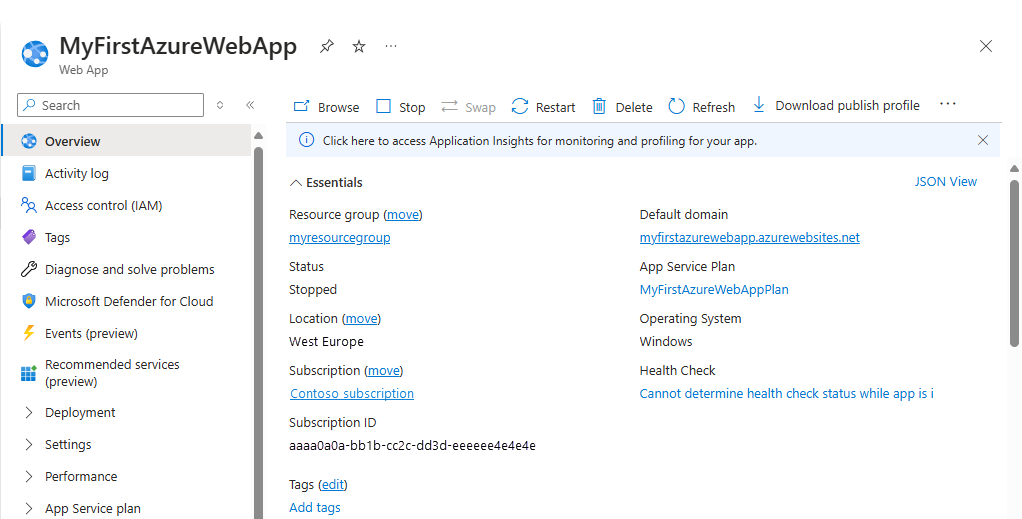How do you deploy applications to Azure?
To deploy applications to Azure, developers typically start by selecting an appropriate deployment service based on their project needs. For applications requiring minimal configuration, Azure App Service provides a platform-as-a-service (PaaS) option for quickly deploying web apps, APIs, or mobile backends.
Developers can use CI/CD pipelines integrated with Azure DevOps or GitHub Actions to automate deployments, reducing manual intervention. For more complex applications, such as microservices-based systems, Azure Kubernetes Service (AKS) offers container orchestration, allowing developers to deploy and scale containerized workloads easily.
The deployment process often involves defining infrastructure using infrastructure-as-code (IaC) tools like Azure Resource Manager (ARM) templates or Azure Bicep. These tools allow teams to define the necessary resources—such as virtual machines, storage accounts, or databases—in a declarative format. The configuration can then be deployed programmatically using interfaces like Azure CLI or Azure PowerShell, ensuring repeatability and consistency across environments.
This is part of a series of articles about cloud deployment.
Overview of built-in Azure deployment services
Microsoft Azure provides multiple services that make it possible to deploy applications to the Azure cloud.
Azure DevOps
Azure DevOps is a suite of tools for managing the DevOps lifecycle, enabling teams to plan, develop, deliver, and operate software efficiently. Key components include Azure Repos for version control, Azure Pipelines for CI/CD automation, Azure Boards for agile project management, and Azure Test Plans for automated and manual testing.
Azure DevOps supports integration with popular development tools such as Visual Studio, GitHub, and Jenkins, making it flexible for diverse team setups. Teams benefit from simplified workflows, traceability, and the ability to deploy to any environment, from on-premises to cloud platforms like Azure or AWS.
By automating tasks such as code compilation, testing, and deployment, Azure DevOps accelerates release cycles while maintaining quality. Features like gated check-ins, automated rollbacks, and detailed reporting help organizations manage risk.

Source: Microsoft
Azure Deployment Manager
Azure Deployment Manager simplifies the deployment of cloud resources by offering a unified approach to organizing, planning, and controlling deployments. It uses rollout capabilities to deploy resources incrementally, allowing teams to monitor each stage and address potential issues before proceeding.
Deployment Manager is beneficial for large-scale deployments that span multiple regions or environments. It ensures consistency in configuration and reduces manual errors.
By supporting dependency management, Deployment Manager ensures that services are deployed in the correct order, minimizing potential conflicts. Additionally, it integrates with Azure Resource Manager (ARM) templates, enabling teams to use existing IaC investments.

Source: Microsoft
Azure Blueprints
Azure Blueprints simplify creating and deploying compliant environments by packaging policies, role assignments, and resource templates into a single, reusable construct. These blueprints can enforce corporate or regulatory requirements, ensuring every deployment adheres to predefined standards.
For example, organizations can use Blueprints to automatically apply security policies, configure network settings, or provision specific monitoring tools when creating new environments. Blueprints simplify the governance of Azure environments by providing version control and audit tracking, enabling administrators to track changes and maintain compliance over time.
They also support parameterization, allowing teams to customize blueprint deployments for different use cases without altering the underlying design. With Azure Blueprints, enterprises can efficiently scale their governance frameworks across multiple subscriptions and tenants.

Source: Microsoft
Azure Bicep
Azure Bicep offers a simplified syntax for defining Azure infrastructure as code, addressing many complexities associated with ARM templates. It enables developers to use a cleaner, more concise language while still leveraging the full power of Azure Resource Manager. Bicep supports modular design, allowing teams to break large templates into smaller, reusable components for better organization and maintainability.
Bicep’s built-in type validation and IntelliSense support help prevent errors and improve developer productivity. It integrates with existing CI/CD workflows, ensuring infrastructure deployments are automated and repeatable. Bicep also supports backward compatibility, enabling users to decompile existing ARM templates into Bicep code for easier management.

Source: Microsoft
Azure Kubernetes Service (AKS)
Azure Kubernetes Service (AKS) simplifies the deployment and management of containerized workloads by offering a fully managed Kubernetes environment. AKS handles key operational tasks such as provisioning, scaling, monitoring, and updating Kubernetes clusters, reducing the operational burden on development teams. It integrates seamlessly with Azure Monitor and Azure Security Center, providing visibility into cluster performance and security.
AKS supports features such as node auto-scaling, integrated DevSecOps workflows, and multi-cluster management. It also provides options for hybrid and multi-cloud deployments through tools like Azure Arc. By offering pre-configured integrations with popular DevOps tools, AKS enables rapid application delivery while maintaining security and compliance standards. It is well-suited for microservices architectures, enabling developers to use Kubernetes-native features such as service discovery, load balancing, and rolling updates.

Source: Microsoft
Azure App Service
Azure App Service provides a platform-as-a-service (PaaS) solution for hosting web applications, APIs, and backends with minimal infrastructure management. It supports automatic scaling based on demand, ensuring applications remain responsive during traffic spikes. App Service also offers load balancing, custom domains, and HTTPS encryption.
Developers can use Azure App Service to deploy applications written in multiple programming languages, including .NET, Java, PHP, Python, and Node.js. It integrates with CI/CD pipelines for automated deployments and supports deployment slots to enable testing and staging. It also connects to Azure services like SQL Database, Functions, and Storage.

Source: Microsoft
Azure deployment interfaces
The Azure ecosystem provides four key interfaces that support application deployment:
Azure Portal
Azure Portal is a web-based interface that simplifies the deployment and management of Azure resources. It offers a graphical user interface, letting users to create, configure, and monitor applications and services. The portal provides dashboards for monitoring resource performance, setting alerts, and managing costs.
Learn more in Azure documentation: Azure portal
Azure CLI
Azure Command-Line Interface (CLI) offers a method for managing Azure resources programmatically. It supports automation of various tasks such as deployment, scaling, and monitoring, making it useful for scripting and complex workflows. The Azure CLI can be used across different platforms and offers integration with various programming environments.
The CLI allows for rapid deployment and configuration by enabling command execution directly from the terminal. It provides control over cloud resources, supporting repetitive and batch operations. By incorporating Azure CLI into deployment strategies, businesses can use agility and automation capabilities.
Learn more in Azure documentation: Azure CLI
Azure PowerShell
Azure PowerShell provides a command-line environment for automating Azure management tasks. It enables users to create and configure Azure resources using PowerShell scripts. Developed as a task automation framework, Azure PowerShell supports complex deployment needs with precision and scalability.
PowerShell’s integration with Azure allows task automation, simplifying resource management and speeding up deployments. It supports ongoing management of Azure resources, including monitoring, scaling, and security configurations, in a uniform environment. Azure PowerShell is useful for IT professionals looking to automate cloud strategies.
Learn more in Azure documentation: Azure Powershell
Azure Resource Manager templates
Azure Resource Manager (ARM) Templates enable infrastructure as code, allowing consistent definition, deployment, and resource management. These JSON-format-based templates enable the configuration of entire environments, ensuring repeatability and reducing manual setup errors. ARM Templates offer versioning and integrate with source control.
Using ARM templates, organizations can automate the deployment of resources, supporting rapid infrastructure provisioning. As templates define configurations clearly, they aid in compliance auditing and simplify migrations. The reusable nature of ARM Templates enables effective resource management across various projects.
Learn more in Azure documentation: ARM Templates
Example: Deploy an application to Azure Kubernetes Service
Here’s an outline of the process for deploying a sample application using AKS. These instructions are adapted from the Azure documentation.
1. Update the Kubernetes manifest file
The Kubernetes manifest file defines the configuration of your application and the associated resources. To deploy your application, start by updating the manifest file (e.g., aks-store-quickstart.yaml) to reference your container images stored in Azure Container Registry (ACR).
-
First, retrieve your ACR login server name using the Azure CLI command:
az acr list --resource-group <resource-group> --query "[].{acrLoginServer:loginServer}" --output table -
Then, open the manifest file and replace placeholders (e.g.,
ghcr.io/azure-samples) in theimageproperty with your ACR login server name. For example:containers: - name: order-service image: <acrName>.azurecr.io/aks-store-demo/order-service:latest -
Save the updated file to apply the changes.
2. Deploy the application
To implement deployment:
-
Use the
kubectl applycommand to deploy the application to the Kubernetes cluster. This command reads the manifest file and creates the defined resources in the cluster:kubectl apply -f aks-store-quickstart.yaml -
After running the command, verify that the resources, such as deployments and services, are successfully created. You can check the status of your pods with:
kubectl get pods
3. Expose and test the application
When the application runs, a Kubernetes service (e.g., a LoadBalancer) exposes the application to the internet.
-
To monitor this process, use:
kubectl get service store-front --watch -
Initially, the
EXTERNAL-IPfor the service might show as<pending>. Wait for it to update to a public IP address. Once the IP address is available, you can stop the watch process usingCTRL-C. -
Visit the application by navigating to the external IP address in a web browser, for example:
http://<external-ip> -
If the application does not load, it could be due to authorization issues with the container registry. In this case, ensure the AKS cluster is authenticated with Azure Container Registry.
4. Clean up resources
After validating that the application is running successfully, you can clean up the deployed resources to prepare for future deployments.
-
Use the following command to delete the application:
kubectl delete -f aks-store-quickstart.yaml -
Confirm that the application pods have been removed by running:
kubectl get pods
5 best practices for Azure deployment
By implementing the following best practices, organizations can ensure the most effective deployment in Azure.
1. Implement infrastructure as code
Infrastructure as code (IaC) automates infrastructure management by codifying configurations, supporting consistent deployment across environments. Tools like Azure Resource Manager (ARM) Templates and Azure Bicep enable the definition of IaC, enabling repeatability and version control.
Applying IaC practices reduces manual errors, improves compliance, and accelerates onboarding of new environments and resources. IaC supports agile methodologies by enabling environments’ rapid provisioning, developer-testing-bench setups, and scalable infrastructure definitions. Automation through IaC promotes resource optimization, cost management, and adaptability to changing needs.
2. Monitor and log application activity
Tools like Azure Monitor provide real-time data analytics, alerting systems, and customizable dashboards to track resource metrics. Logging services such as Azure Log Analytics collect data for troubleshooting, performance analysis, and compliance audits.
Implementing monitoring and logging frameworks ensures quick identification and resolution of potential issues. These practices enable resource use tracking, enabling capacity planning and scaling adjustments. By maintaining logs and insights, organizations improve user experiences and service availability.
3. Optimize costs with scaling and sizing
Cost optimization in Azure is achievable through strategic scaling and resource sizing. Azure’s automated scaling features allow resources to adjust dynamically to workload demands, minimizing over-provisioning and related expenses. Evaluating resource use and aligning it with application requirements ensures optimal performance at reduced costs.
Employing cost-management tools like Azure Cost Management provides insights into spending patterns and cost-saving opportunities. Analyzing workload patterns, right-sizing resources, and selecting appropriate pricing tiers drive financial efficiency. Developing a culture of cost awareness and monitoring ongoing expenditures supports informed decision-making.
4. Secure your deployments
Securing Azure deployments involves implementing measures to protect data, applications, and networks. Azure’s native security tools, like Azure Security Center and Azure Active Directory, offer solutions for identity management, threat detection, and access controls. Critical steps include encrypting data at rest and in transit, configuring firewalls, and limiting access through RBAC.
Ensuring secure deployments requires continuous monitoring, regular updates, and adherence to regulatory standards. Security assessments, penetration testing, and alerting systems support proactive threat mitigation. Establishing security best practices throughout the development lifecycle improves protection against vulnerabilities.
5. Implement disaster recovery plans
Disaster recovery plans in Azure ensure application availability and data preservation during unforeseen events. Azure’s built-in solutions, such as Azure Site Recovery, offer automated replication and failover capabilities across regions, supporting business continuity. By defining recovery time and point objectives, organizations maintain operational readiness and minimize disruptions.
Regular testing of disaster recovery processes ensures reliability and confidence in emergency scenarios. Implementing redundant architectures, leveraging geo-redundant storage, and maintaining backups are essential elements of disaster recovery strategies. These practices ensure resilience, enabling smooth recovery from data losses, system failures, or cyber threats.
Automating Azure deployments end-to-end with Octopus
Octopus has out-of-the-box support for Azure deployments and infrastructure management, including container apps, web applications, web jobs, Azure functions, resource group templates, cloud services, service fabric, and more.
When you have a mix of Azure services, deploy to multiple clouds, or manage tenant-specific infrastructure, Octopus can bring everything together in one place.
Get started with Octopus
Make complex deployments simple
Help us continuously improve
Please let us know if you have any feedback about this page.


